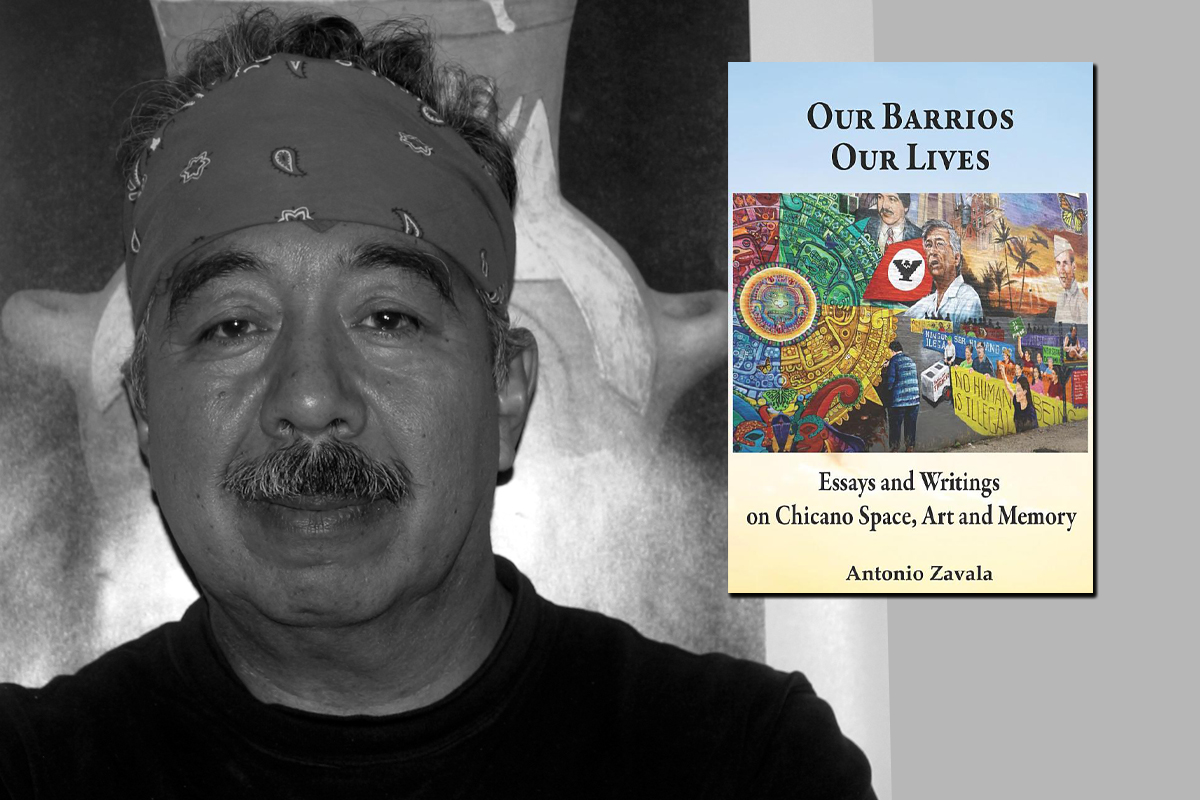
Review of Antonio Zavala’s Our Barrios Our LIves
Review of Antonio Zavala’s Our Barrios Our LIves
Hector Hernandez
Review of Antonio Zavala’s: Our Barrios Our Lives – Essays and Writings on Chicano Space, Art and Memory.
Zavala is a writer and journalist by profession. For most of his life, he has participated in areas that impact Chicano and Mexican populations in the U.S., primarily in Chicago, Illinois. Issues such as social activism, preserving and promoting the Spanish language and Mexican culture, and education are pronounced interests of his. Through his work as a journalist and as a founder of, and participant in, theater and Aztec dance groups he has sought to spread his message.
Zavala writes about social issues, history, theater, dance, music, art and literature. This book is a collection of short and well-researched articles. These pieces have been written by the author over the years and have been published in different publications. Some of these stories were written in Spanish, Zavala’s native language, and later translated into English to be included in this book.
It should be noted that although the word Chicano is used on the front cover and title page of the book, we see the terms Mexican, Latino and Hispanic used throughout the book. Zavala himself referred to Pilsen as a Mexican neighborhood in his 2018 book: Memorias de Pilsen: Recuerdos de lucha de un barrio mexicano en Estados Unidos.
Chicano space, as I see it, refers mainly to the Southwestern and Midwestern parts of the U.S. At a local level, that space indicates specific communities that we learn of in this book.
Chicano art is addressed in two of the stories of this book, “Mexican Artists Exhibit in Bordeaux, France” and “Latino Murals: Walls that Speak.” It is not possible to be all inclusive in a brief article about Chicago’s Mexican, Chicano and other mural artists. This topic can easily be the subject of another book. Nonetheless, here we have a good representation of the Latino artists in Chicago who have left their imprint in our communities. Through their interviews they share their viewpoints on muralismo.
As the Branch Manager of the largest Hispanic Public Library in the Midwest, for thirty years, —Pilsen’s Rudy Lozano Branch of the Chicago Public Library— I was privileged to know some of the artists included in the “Latino Murals …” story as well as other internationally known Pilsen muralists, not included here, like Alejandro Romero —one of the best known and most visible Hispanic visual artists in the United States—, Óscar Romero and Jesús Acuña. Perhaps Zavala, or a reader, will write an all-inclusive book on this subject.
Chicano memory is that which brings clearly before the mind the collective struggles of our people. The battles fought to gain access to quality education for Mexican-American children in California and Texas are part of Chicano memory, or history, as described in the book. The 1969 National Chicano Youth Liberation Conference in Denver, Colorado and the formation of the Chicano Indian American Union at the University of Iowa in 1970 are also part of the Chicano memory.
By reading this book, we learn about great Chicano historical figures such as Cesar Chavez, Dolores Huerta, and Rodolfo “Corky” Gonzales. What were the causes Chicanos, and Mexicans in the U.S., were fighting for? Well, among these are access to quality education, good working conditions and fair wages, and immigration issues. The battles Chicanos had to fight to break down barriers in a number of areas and their struggles to improve their living and working conditions are well documented in this book. How did Chicano activists at the local level attempt to raise consciousness of the areas of interest? Music and theater presentations to create live, vivid representations of their ideas were among the methods used to achieve this goal.
A minor observation is that careful editing of this book would be helpful, perhaps this can be done for a subsequent edition.
On page 33 incorrect verb tenses are used: “… Cristobal manage to escape.” and: “… they use to visit.” This is a common mistake those of us who are native Spanish-speakers are likely to make.
On page 83 is an article from the Des Moines Register newspaper of October 13, 1973 regarding student support for the lettuce boycott. Here, a misplaced comma changes the meaning of a sentence entirely: “… students to meet with university officials to ask that the U of I quit serving lettuce in dining facilities here.” Also on this page, the article refers to the student group as: “The Chicago-Indian American Cultural Center here.” Obviously, that should read: Chicano, not Chicago.
I believe the following two stories, “Simone and Nelson: a love affair” and “The Conquest of Michoacán” don’t fall within the scope of this book. However, they are good articles that show the wide range of subjects Zavala pursues in his writings.
Zavala’s book has excellent content and a great deal of useful information. It can be used as study material for a course on Chicano history. It covers a broad range of related topics and geographical regions where Chicanos and Mexican-Americans have existed for decades or even centuries.
The stories in this book are well-written, which make it a wonderful tool to teach our younger generations about those who came before them. This is so particularly, but not exclusively, when it comes to Chicago communities considered as traditional Chicano, or Mexican, barrios. Here we learn about the early Mexican settlers and Texas Chicanos who came to these communities and the causes that brought them to this region. We also become familiar with later generations of activists in South Chicago, Pilsen, Back of the Yards and Little Village.
I have read and enjoyed this book, which is why I highly recommend it.
